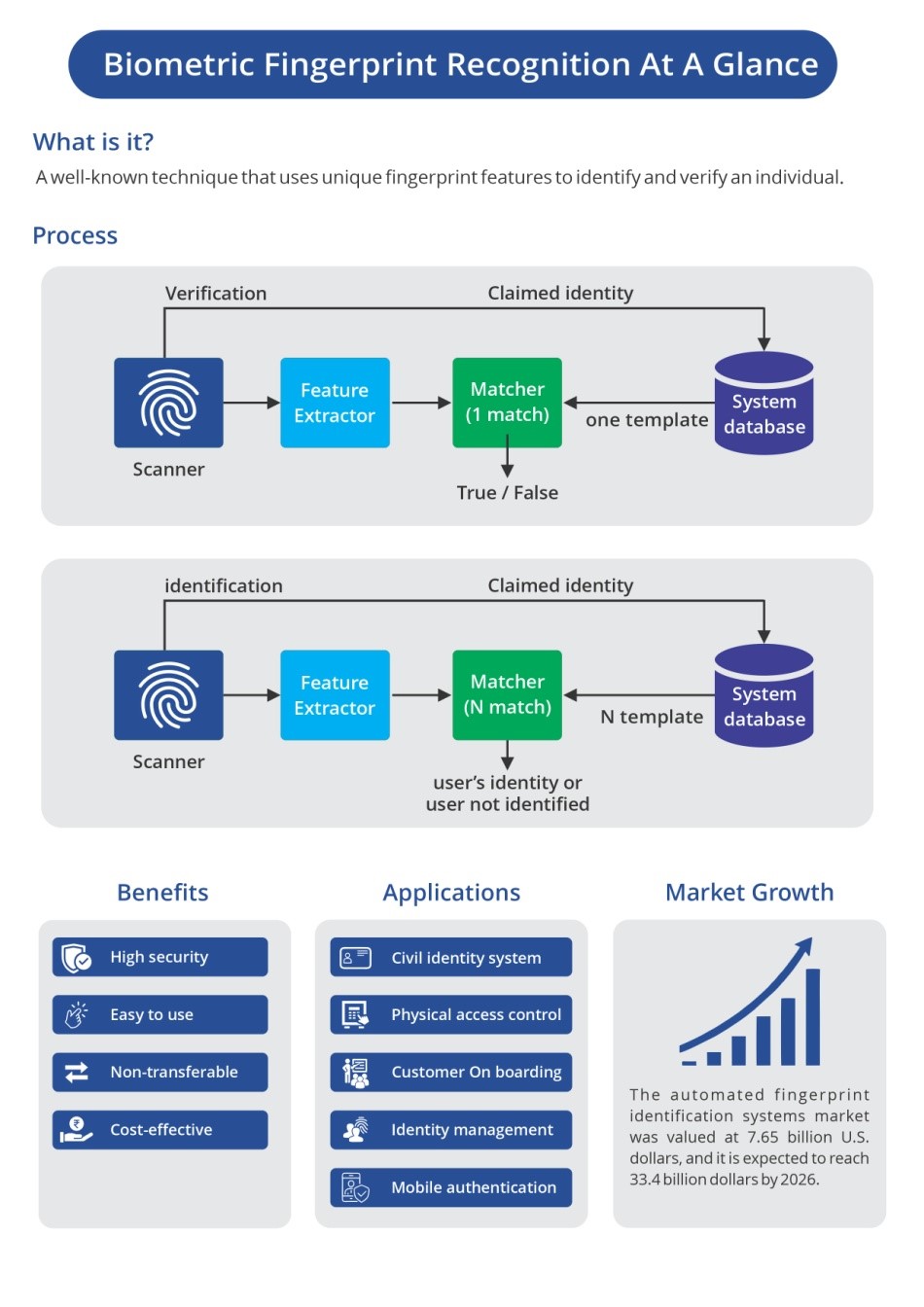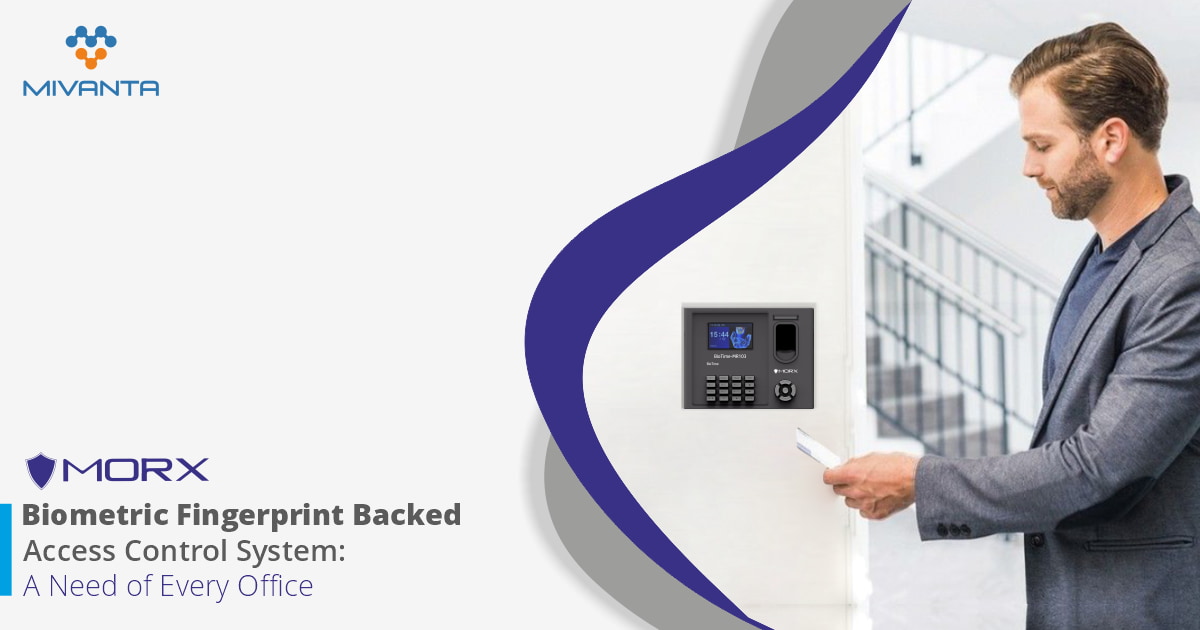Since its inception in the 14th century, the biometric system has gone through continuous transformations to become the most robust security solution. Organisations use biometric fingerprint because it promises high-level security to their assets, information and valuables. Despite the entry of numerous biometric modalities into the security market, the popularity of biometric fingerprint technology remained intact. It has revolutionised the way persons are recognised, confirmed, and authenticated due to their uniqueness and consistency over time.
It is difficult to discuss all the biometrics modalities in an article; therefore, this blog sheds light on fingerprint biometrics and how they streamline the access control system. Let's first understand biometrics with the most fundamental question.
This Article Includes:
(You can click on the link to jump to a particular section)
What is biometric fingerprint recognition?
Why do offices need to deploy a fingerprint backed access control system?
Let's get started.
What Is Biometrics?
Biometrics is a person's unique physical and behavioural features that make identification, verification and authentication possible. Fingerprintsiris, retina, voice, face are a few examples of biometrics. Leveraging biometrics to verify a person's identity leads to several uses cases. Attendance and access control management are well-known use cases of biometric recognition technology.
What Is Biometric Fingerprint Recognition?
Biometric fingerprint recognition is a physical approach for identifying, verifying, or authenticating an individual based on their unique finger traits. You may be surprised to know that even identical twins exhibit diverse patterns, which indicates the degree of uniqueness of fingerprints.
The process of biometric fingerprint recognition begins with the scanning of fingerprint traits. Software analysis these traits and compares them to a database of registered fingerprints. The system offers access to the user if the match is successful.
The Fingerprint matching techniques include two categories: minutiae-based matching and pattern matching.
Pattern matching: The arch, the loop, and the whorl are three main patterns of fingerprint ridges used in this approach to identify an individual. This method compares two photos of fingerprints to determine their similarity.
Minutiae matching: The most extensively used identification approach, minute based matching, is based on the minutiae points, especially the location and orientation of these points. In general, each fingerprint includes up to 50 distinct minutiae, but ridge termination, bifurcation, and dot are the main characteristics required for identification.

Biometric Fingerprint Scanner for Access Control
Biometrics is incomplete without discussing fingerprint scanners. The fingerprint scanner is a device that captures the fingerprint so that software can analyse it. With its growing popularity, biometrics companies are working on designing advanced fingerprint sensors or readers to streamline the access control process. Modern fingerprint scanners can take a clear image of a finger regardless of whether it is scarred, moist or even aged.
The three most common fingerprint devices are optical, capacitive, and ultrasonic scanners.
Optical Scanners: Optical sensors use an LED light to illuminate the finger to capture a fingerprint image. The brightest and darkest parts of the image created by ridges are then analysed using algorithms to identify different patterns on the surface.
Capacitive Scanners: The popularity of capacitive sensors is increasing. Fingerprint lock on mobile is the most common use of these devices. Capacitive fingerprint scanners capture data using arrays of small capacitor circuits. Since capacitors hold an electrical charge, they can monitor the specifics of a fingerprint by attaching them to conductive plates on the scanner's surface.
Ultrasonic scanner: This relatively new method uses ultrasonic waves to authenticate a person. It enables the sensor to get attached under the display glass, making reading easy.
Why do offices need to deploy a fingerprint backed access control system?
The fingerprint-backed access control system helps your office tackle security threats while keeping costs down. Below are the advantages that you can't ignore.
Promises robust time and attendance management
Offer High security
Enhance employee accountability
Prevents Buddy punching
Easy to Install
Bottom Line
Biometric fingerprint identification technology is evolving, making it an ideal solution to tackle evolving security threats. It has a stronghold in areas: corporate, border security control, banks, and educational institutes. As per Statista, the global biometric system will grow in the coming years, reaching a size of 68.6 billion U.S. dollars by 2025. In response to these encouraging statistics, biometric businesses are working on making the technology more convenient and safe.
ARE YOU IN SEARCH OF THE BEST FINGERPRINT-BASED ACCESS CONTROL SYSTEM?
MIVANTA IS JUST A CLICK AWAY
Let's Connect
